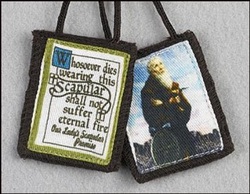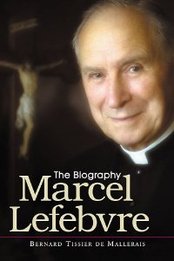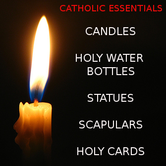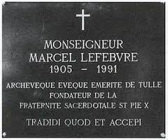
Deafened by the shrieks of the many hysterical, blood-covered priests, the Jewish King, Achab, presses foremost in the tremendous crowd of onlookers. His face is contracted with worry and pain; the faces of his entourage are crestfallen. But to the side, alone, a white-bearded old man stands wreathed in smiles! His eyes glint like fire and quick gestures betray a great nervous strength in his thin and poorly clad body. He is jesting with the priests and taunting them!
Behind this mysterious and horrible scene lies a tense drama.
The Jewish nation has fallen into idolatry and three years and six months before this day, that old man—who was dwelling on this same mountain-walked down the streets of the royal city and up to the palace. He then proclaimed before the king that if the nation did not return to its God it would be divinely punished. Since that very day, when he was sent away from the royal palace unheeded, it has not rained in all Palestine. But now, at the summons of the king, the whole nation is gathered on Mount Carmel. The venerable old man—who is the fiery prophet, Elias—having once more presented himself, commanded the capitulating monarch to "gather unto me all Israel, on Mount Carmel, and with them the pagan prophets who eat at the queen's table: four hundred and fifty prophets of Baal and four hundred prophets of the groves".
Early this unforgettable morning, Elias stood before the vast, wondering throng and cried: "How long do you halt between two sides? If the Lord be God, follow Him! but if Baal, follow him!" No one spoke a word. Not a move was made. So the prophet fairly proposed a contest. The pagan prophets would build an altar and he would build one. Then they would both offer holocausts and pray for miraculous fires to consume their offerings: the God Who sent down the consuming fire would be acknowledged by the nation as the true God. The pagans have been storming their idols for hours while their holocaust only drys in that relentless sun from a sky that has been cloudless so interminably long.
However, it is not so much for the fire-contest between the prophets that we interest ourselves in this strange sight but for the after-event. After he has brought down a miraculous fire and thus proved that "God is God" and after he has seen the whole nation fall to its knees with the cry "The Lord is God! The Lord is God!", the mysterious prophet turns to the King and says that now it will rain. And while the king goes to take dinner at the prophet's bidding, we follow Elias as he proceeds to a place near the side of Carmel. The murmur of the Mediterranean, which laves Carmel's foot in a perpetual homage to her mysteries, seems to rise like the overture of some great event. Preoccupied, the old man sits on the ground and crouches there, his head between his knees, and tells his young servant to go and look out over the sea; six times we see him return only to report to his venerable master: "There is nothing."
What an unusual scene! What if the Israelites, feasting nearby, were to know that this venerable old man is destined to live until the end of the world . . . What if they knew that in a future century he is to appear with the greatest of their prophets in that one moment of the earthly life of the Incarnate God when He will let fall the veil from His divine splendor! Yes, right over there on that peak facing them —of Mount Tabor—this old man will appear at a moment that will astound the world down through the ages to a stream-lined century of which they do not even dream. What if they knew that at this very moment that awesome figure is not only about to present a material salvation to them but is also about to behold a prophetic vision of the spiritual Salvation of all mankind through an Immaculate Virgin . . .
We see the servant return the sixth time to be again sent by Elias to "look out over the sea". This seventh time he hastens back for, rising out of the sea at the foot of the Mount, he has seen a small cloud in the shape of a human foot!
In the near tomorrows, sainted Doctors of the true Church will explain to the world how this little cloud, rising pure out of its bitter sea and leaving all impurities behind, is a figure of an Immaculate Virgin who will rise pure out of the sea of humankind, free of its universal impurity of original sin. As soon as Elias is told of the tiny cloud ascending over the side of the mystic mountain, we see him rise from his unusual position. Within an incredibly short while: "The Heavens grew dark with clouds and wind and there fell a great rain" (Kings III, ch. 18).
Two thousand, one hundred and ten years later, we see another king expectantly climbing up Mount Carmel. He is not clothed in a toga-like robe but in glistening armor with a large Cross blazoned upon his shield and upon his breast-plate. Surely he does not expect to find a fiery prophet on this Mount; Elias has been taken to Heaven centuries ago, has come in the spirit of John the Baptist to herald the approach of the Son of God, has appeared at the Transfiguration, and has even entered the mystical life of the new Church, a "saint" and a mystery.
No, but this king is the holy Louis IX of France, who will one day be canonized a saint. He is interested in some most holy men who, he has been informed, dwell in the grottos of this Mountain and call themselves "Hermits of Saint Mary of Mount Carmel". Due to the gains of the infidels into Palestine these men are being forced to emigrate to Europe; since their sanctity is a by-word, Saint Louis wants some of it for France.
Having ascended Mount Carmel and having met the monks there, Saint Louis is astounded by the account of a most unusual tradition.
The saintly monks say that they are the descendants of the Prophet Elias and call themselves "Hermits of Saint Mary of Mount Carmel" because the fiery prophet, whom they imitate, had beheld, in a foot-shaped cloud that had divinely soared from the sea below them, a prophetic image of the Immaculate Virgin Mary who was to bring forth man's Salvation and to conquer the pride of Satan with Her heel of humility. He had instructed his followers to pray for the advent of this Virgin-, saying that the vestigial form of the cloud bore out the divine malediction against the devil: "I shall place enmities between thee and the Woman, thy seed and Her seed . . . thou shalt lie in wait for Her heel and She shall crush thy head . . ."
They informed Saint Louis that from the time of Elias until the birth of the Blessed Virgin, the great prophet's successors on Mount Carmel handed down from one to another the great revelation of their Founder, all the while praying for the appearance of that Immaculate Virgin. She had finally come right down in that little town of Nazareth, over at the other side of that plain which lies at the foot of the Mount, where they could look down on its mystery. And then Mary visited them and the Holy Family, on the return from the seven-year sojourn in Egypt, rested awhile among them. They had erected, here on Mount Carmel, the very first chapel on earth ever to be dedicated to the Mother of God. Furthermore, when the Church was spreading and Mary had gone to join Her Divine Son, because of Her predilection for them they received custody of the Holy House in Nazareth.
"Hermits of Our Lady!" Saint Louis must have thought. "Truly if what these holy men believe is fact, they are indeed the 'Family of the Blessed Virgin'."
But, as a matter of fact, fifty years later, almost to the day, Our Lady appeared to Saint Peter Thomas and made the astounding pronouncement: "The Order of Carmel is destined to endure until the end of the world for Elias, the first patron of the Order, asked this of My Son at the Transfiguration!" Later Our Lord Himself, in a colloquy with His beloved Saint Teresa, designated these hermits "The Order of the Virgin"! And if Saint Louis was struck with a reverential awe by the holiness of this family of Mary, what would have been his feelings were he to know what was happening at that very moment, in another part of the world, between Our Lady and "Her Order"?
Some thirty years before Saint Louis came to Mount Carmel to persuade six of the hermits to return with him to France, two English crusaders took a few of the hermits to England. A strange but holy man joined them there in whom they could not help but recognize a great likeness to the fiery prophet whom they ever emulated. He took the name "Simon"; his surname, "Stock", was symbolic of the life he had led prior to their coming: he had been dwelling alone in the fastnesses of an English forest in a-tree-trunk hollow even as Elias had dwelt in Carmel's natural caves. Our Lady, in a personal apparition, had told him that Her devotees were coming from Palestine and that he should join their society.
to be continued...................




